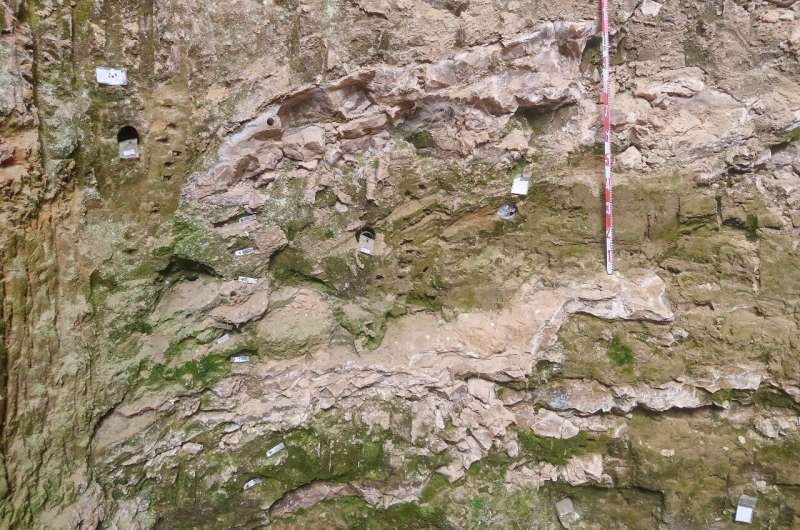This article has been reviewed according to Science X's editorial process and policies. Editors have highlighted the following attributes while ensuring the content's credibility:
fact-checked
proofread
Geochronological study analyzes the most ancient sedimentary levels at the Galería site

Isabel Hernando-Alonso, a researcher at the Centro Nacional de Investigación sobre la Evolución Humana (CENIEH), is the lead author of a geochronological study published in the journal Quaternary Geochronology, in which the electron spin resonance and paleomagnetism methods were used to analyze the oldest sedimentary levels of the site known as Galería Complex in the Sierra de Atapuerca (Burgos), where the Covacha de los Zarpazos and Tres Simas Central caves lie.
The dating methods applied have revealed two age bands: one of around one million years old, for which the sedimentary infilling of these caves could be correlated geochronologically with the formation of the valley of the Arlanzón River; and another between 300,000 and 500,000 years old, which suggests that part of the sedimentary sequence has undergone geochemical alterations that could have affected the dates obtained using certain geochronological techniques.
"It is interesting to notice that the lower part of the deposits conserved in these cavities is similar to what is found at the nearby Gran Dolina site," comments Hernando-Alonso.
Formation of the caves
For some years, a multidisciplinary team has been combining archaeological, geomorphological and geochronological techniques in an endeavor to decipher the system of caves in the Sierra de Atapuerca and thus explain how the sites in this singular enclave were formed.
This new paper studied the chronological relationships between the formation of the caves in the Sierra de Atapuerca and incision by the river network in the NE Duero basin.
During the Pleistocene, there were climatic changes which caused the level of water in these rivers to fall progressively. This created a series of "steps" in the valleys, which are known as fluvial terraces. In addition, the way the rivers progressively downcut is what caused the different horizontal caves of this sierra in Burgos to be formed.
More information: Isabel Hernando-Alonso et al, ESR chronology of the endokarstic deposits of Galería complex (Sierra de Atapuerca, Spain), Quaternary Geochronology (2024). DOI: 10.1016/j.quageo.2024.101575
Provided by CENIEH





















